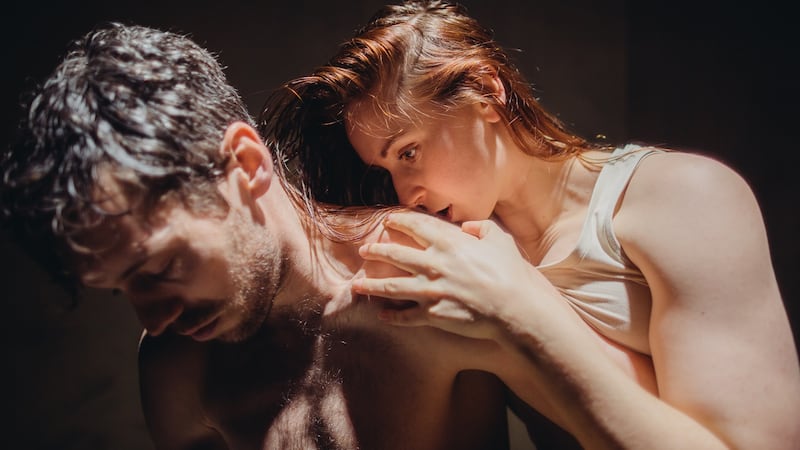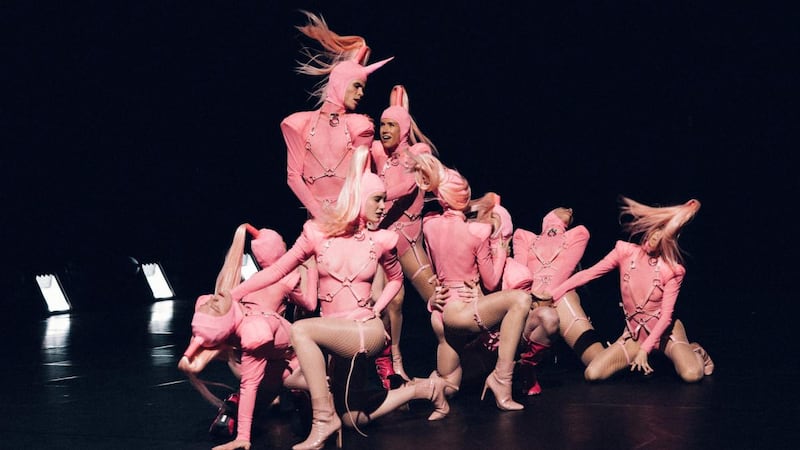Last year's Dublin Dance Festival was a quickly assembled online programme created within a few weeks of lockdown, but this year's performance programme shows a heavier curatorial hand. Commissions and new work from Irish and international choreographers all feature, but – unsurprisingly and slightly depressingly – are all online. How we miss live performance.
In previous years, Liz Roche Dance Company's Demos (★★★★) would have provided the opening night glitz in the Abbey Theatre, the foyer bustling with air kisses and giddy anticipation.
Instead, Demos is subtitled "films of separation and togetherness", an artistic solution to the public health restrictions. A live version is in the offing later in the year, but the films, created by Liz Roche and José Miguel Jiménez, are an important snapshot of today.

Watching them, you realise that context is everything. In the past 14 months, touching, even physical proximity, has become taboo. We have all created our own choreography of maintaining constantly shifting orbits of 2 metres’ distance from other moving people. And we think of these other people less as humans, more as masked biohazards.
Conceptually, separation and togetherness have been to the forefront of our minds throughout lockdown. We engage in individual sacrifice for the collective good. We need to separate ourselves from close friends and family, but we as a society are all in this together.
Roche and composer David Coonan began discussions about this collaboration in 2018. How strange this version of Demos would have looked then, the dystopian opening image of dancers standing apart in a line with clear plastic face masks. The audience would have been puzzled as to why their bleak bodies were seemingly willing, yet unable, to physically connect. Viewed now, it is commonplace. Katie Davenport's design is a constantly shifting interior where doorways act as frames, lights spilling through, and musicians of the Crash Ensemble are projected on walls.
Tension
Entitled Travelling Back, this opening film articulates the tension between the individual and the group. Each dancer is dancing in isolation, but seems to easily affect others. One person’s movement triggers a response from another, and the eye is drawn to trying to find connections between bodies. Here the camera is most insistent in guiding our eyes: almost constant panning, angles and distance regularly changing, drawing focus to the empty space between bodies.
This is further accentuated in a later film, Catching and Falling, where the dancers’ outstretched hands begin to catch a falling dancer, only to draw their hands away at the last minute lest they touch. The air between the falling dancer and hand becomes compressed and charged, which makes the physical touching in the next film, Hand in Hand, all the more jarring.
The two dancers, Luke Murphy and Emily Terndup, are a couple in life, so physical contact was possible. But any contact was minimal, almost furtive, the duet ending with them retreating into a corner closely followed by the camera lens. And here the Crash Ensemble musicians are more insistent, observing the action almost as a Greek chorus, commenting through their improvised music.

Now under the artistic direction of Parisian collective (La)Horde, Ballet national de Marseille (★★★★) presented four works of astounding variety that would be hard to find in any other ballet company’s repertoire. Unlikely to feature live to Dublin audiences, it revealed the well-resourced artistic bravery found in Europe’s dance landscape and the astounding versatility of dancers who danced in all four works.
Tempo Vicino by New York postmodern legend Lucinda Childs was her usual highly satisfying structural offering of geometrical patterns, in contrast to the more static tableaux found in Tânia Carvalho's One of Four Periods in Time, featuring splay-legged shifting groups melting grimacingly, eventually becoming more structured in sharper unison, matching a militaristic snare drum. Mood, by the French voguing star Lasseindra Ninja was a joyous, pumped-up celebration of equality and togetherness that smoothly transitioned into Lazarus, Oona Doherty's solo that has been recreated for 20 dancers.
Identities
Dublin audiences would have previously seen Doherty dance Lazarus live, her extraordinary performances channelling different identities and energies into one body. Expanded for 20 dancers, that individual focus is dissipated into the crowd. Paradoxically, the overall group appears more threatening, yet each individual seems more vulnerable and isolated, forced to conform and fake a role set by society around them.
Lyon Opera Ballet’s Triple Bill (★★★) featured two solos from its Danser Encore programme, which teamed 30 choreographers with 30 dancers in an attempt to reignite the creation of new work in the middle of restrictions.
A filmed live performance of Komm und Birg Dein Antlitz by Iannis Mandafounis featured the wonderful Yan Leiva in a solo that had a fluid, improvisatory feel and made the most of the connection between choreography and dance, not a role for dictating but a position of learning from one another.
Kristina Bentz was the soloist in Jan Marten's Period Piece, which looked back to pre-Covid normality while imagining a better future. Set to Henryk Górecki's Sacre de Printemps-like music, the lone performer at times struggled against the bombast, and at other times was dismissive of its power, the individual overcoming impossible forces.
Alessandro Sciarroni’s The Collection took north Italian folk dancing steps and created a thigh- and shoe-slapping ritualist unison that transcended time and space until the group became a singular organic being.
The latest collaboration between choreographer Crystal Pite and director Jonathon Young brought the exacting lip-synching and exaggerated gestural language of Betroffenheit to Gogol's The Government Inspector in Revisor (★★★★★). Driven by astonishing performances by the eight dancers, the farce gives way to a central dance, where individual characters are discarded and a beautiful universality emerges. Separation giving way to togetherness, another reflection of these times.










